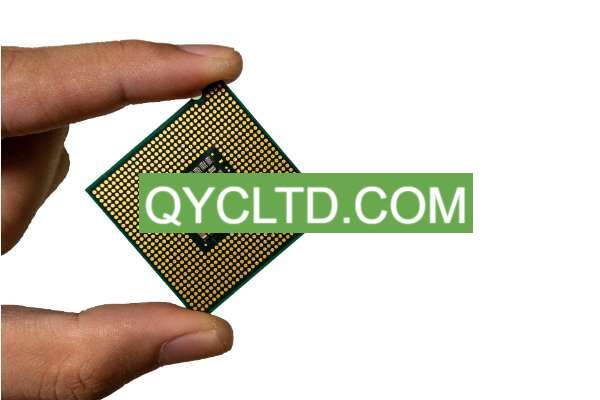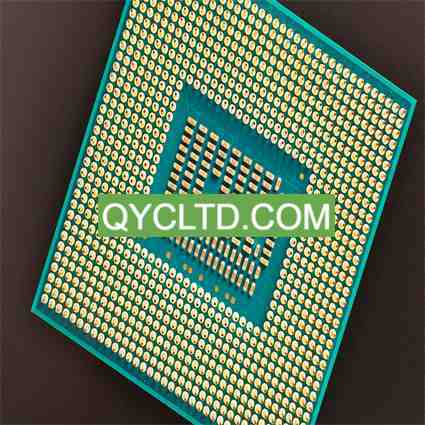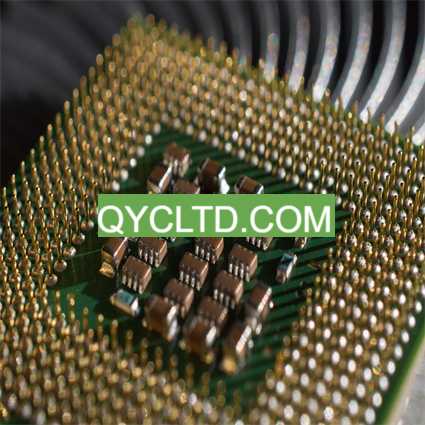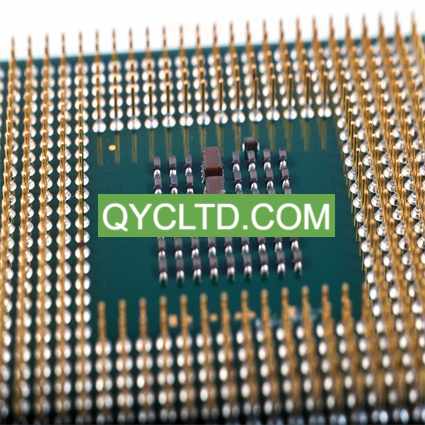What are LED Ceramic Substrates?
LED Ceramic Substrate Manufacturer. LED Ceramic Substrate Manufacturer specializes in crafting cutting-edge substrates for LED technology. Employing state-of-the-art ceramic materials and advanced manufacturing techniques, they produce high-performance substrates crucial for the efficiency and durability of LED lighting systems. With a focus on precision engineering and quality assurance, they cater to the demands of various industries, including automotive, aerospace, and consumer electronics. Their dedication to innovation and continuous improvement ensures that they remain at the forefront of the LED substrate market, providing reliable solutions that empower next-generation lighting applications.
LED ceramic substrate is a specially designed Substrat for mounting LED chips and related electronic components. Compared with traditional substrate materials, wie z.B. FR-4 (glasfaserverstärktes Epoxidharz), LED ceramic substrates have higher thermal conductivity and mechanical strength, so they are widely used in LED lighting applications.
In LED lamps, the LED chip is the key light source, and the LED ceramic substrate plays an important role in providing support and thermal management for the LED chip. LED chips generate a large amount of heat when working. If the heat cannot be dissipated effectively, the performance of the LED lamp may be reduced or even damaged. Deshalb, selecting the appropriate substrate material is critical to the performance and reliability of LED luminaires.
LED ceramic substrates are usually made of ceramic materials such as aluminum oxide (Alumina) or aluminum nitride (Aluminum Nitride). These materials have excellent thermal conductivity and can quickly conduct the heat generated by the LED chip to the heat sink or housing, thereby effectively reducing the operating temperature of the LED chip. Gleichzeitig, ceramic materials also have good mechanical strength and chemical stability, and can maintain stable performance in various harsh environments.

Hersteller von LED-Keramiksubstraten
In addition to thermal conductivity and mechanical strength, LED ceramic substrates also have excellent insulation properties. This is crucial in high-voltage or high-power LED applications and can effectively prevent circuit short circuits or leakage.
Insgesamt, LED ceramic substrates play an indispensable role in modern lighting technology. Its excellent thermal conductivity, mechanical strength and insulation properties make it an ideal choice in the manufacturing of LED lamps, ensuring stable performance and long-term reliability of LED lamps.
How to design LED Ceramic Substrates?
The design of LED ceramic substrate is a complex and critical process, which directly affects the performance and reliability of LED lamps. Designers must consider multiple factors, including thermal management, Elektrische Leistung, und mechanische Stabilität, to ensure that the substrate will operate reliably in a variety of environmental and operating conditions. Several key aspects of LED ceramic substrate design will be introduced in detail below:
LED chips generate a large amount of heat during operation. If the heat cannot be dissipated effectively, the performance and life of the LED will be affected. Deshalb, the design of LED ceramic substrates must consider how to effectively manage and disperse heat. Designers often design heat sinks or heat dissipation channels on the surface of the substrate to increase the surface area for heat dissipation and improve thermal conductivity by optimizing material selection and thickness.
LED ceramic substrates not only need to provide good thermal management, but also need to meet certain electrical performance requirements. Designers need to ensure that the electrical characteristics of the substrate meet the driving requirements of the LED chip, including the control of parameters such as resistance, capacitance, and inductance. Während des Designprozesses, CAD software can help designers simulate and optimize circuit layout to ensure the optimal electrical performance of the substrate.
LED ceramic substrates usually need to work under harsh environmental conditions, wie z. B. hohe Temperaturen, humidity and mechanical shock. Deshalb, designers need to ensure that the substrate has sufficient mechanical stability and durability to resist the effects of the external environment. This includes selecting appropriate materials and thicknesses, designing appropriate support structures, and conducting reliability analysis and testing.
In the design process of LED ceramic substrates, CAD software is an indispensable tool. Designers can use CAD software for circuit layout design, thermal simulation analysis and 3D model establishment to complete design tasks quickly and efficiently. CAD software can also help designers with design verification and optimization to ensure that the substrate meets the requirements of a specific application and can be effectively integrated with other components.
Zusammenfassend, the design of LED ceramic substrate is a complex process that comprehensively considers multiple factors such as thermal management, electrical performance and mechanical stability. By using CAD software for design and optimization, designers can ensure that the LED ceramic substrate can work stably and reliably under various operating conditions, providing a solid foundation for the performance and reliability of LED lamps.
What is the manufacturing process of LED Ceramic Substrates?
The manufacturing process of LED ceramic substrates is a precise and complex process involving multiple critical steps to ensure that the quality and performance of the final product meet high standards. The manufacturing process of LED ceramic substrates will be introduced in detail below.
The manufacturing of LED ceramic substrates begins with the material preparation stage. Commonly used ceramic materials include aluminum oxide (Al2O3) and aluminum nitride (AlN). These materials have excellent thermal conductivity and mechanical strength to effectively dissipate heat and provide stable support. During the material preparation stage, manufacturers will conduct strict screening and inspection of raw materials to ensure that their quality meets requirements.
Once the materials are ready, the next step is to print the circuit pattern onto the surface of the ceramic substrate. This step is usually accomplished through a screen printing process, in which conductive ink or conductive adhesive is printed onto the surface of the substrate through a stencil. These printed patterns will become the connection points for LED chips and other electronic components.
Nach Abschluss des Druckvorgangs, the LED ceramic substrate needs to go through a sintering process. Sintering involves placing the substrate in a high-temperature environment to combine its materials into a solid whole. This step is designed to eliminate pores and voids in the material and ensure that the substrate has good mechanical strength and thermal conductivity. The sintering process is usually carried out under controlled temperature and atmosphere to ensure that the substrate reaches the expected performance specifications.
The final step is to process the sintered substrate. This includes processes such as smoothing and polishing the substrate, as well as drilling, cutting and trimming where necessary. The machining process is designed to ensure the surface smoothness and dimensional accuracy of the substrate to meet the requirements of the final product.
Quality control is a vital link throughout the entire manufacturing process. The manufacturer ensures that each LED ceramic substrate meets high standard specifications through strict inspection and testing procedures. This includes quality control of materials, printing, sintering and processing, as well as functional performance and reliability testing of the final product.
Im allgemeinen, the manufacturing process of LED ceramic substrates is a comprehensive process that requires sophisticated equipment and technology, as well as strict quality control. Through these steps, manufacturers can produce high-quality, stable-performance LED ceramic substrates, providing reliable support for the development of modern lighting technology.
How much do LED Ceramic Substrates cost?
The cost of LED ceramic substrate is one of the important factors that determines the feasibility of its purchase. Aber, the cost of LED ceramic substrates is not fixed, but is affected by many factors.
Zuallererst, material is one of the main factors affecting the cost of LED ceramic substrates. Different types of ceramic materials have different properties and prices. Zum Beispiel, aluminum oxide and aluminum nitride are commonly used LED ceramic substrate materials, and their costs may vary. Außerdem, if the substrate requires special surface treatment or the addition of other materials to improve performance, this will also increase the cost.
Zweitens, the size and thickness of the LED ceramic substrate will also affect its cost. Larger size or thicker substrates generally require more raw materials and may require more processing steps during the manufacturing process, which may increase costs.
Quantity is also one of the important factors affecting cost. Generell, mass production can reduce the cost per substrate because manufacturers can take advantage of economies of scale and save on raw material and labor costs. In comparison, the cost of low-volume production is usually higher.
Endlich, the manufacturing process will also have an impact on the cost of LED ceramic substrates. Some advanced manufacturing processes may require more expensive equipment and technology, and may require greater labor costs. Deshalb, using complex manufacturing processes may increase the cost of the substrate.
Im allgemeinen, with the advancement of technology and the expansion of production scale, the cost of LED ceramic substrates has gradually declined. This means that over time, LED ceramic substrates may become more affordable, thus promoting the further development and popularization of LED lighting technology.
What materials are LED Ceramic Substrates made of?
LED ceramic substrates are an indispensable component in today’s LED lighting industry, and their manufacturing materials determine their performance and scope of application to a large extent. Typischerweise, LED ceramic substrates are made of ceramic materials such as aluminum oxide or aluminum nitride. These materials have a range of excellent properties that make them ideal for LED lighting applications.
Zuallererst, alumina, as one of the common materials for LED ceramic substrates, has excellent thermal conductivity. LED lamps generate a large amount of heat during operation, and good thermal conductivity can help dissipate the heat quickly and keep the operating temperature of the LED chip within a safe range. This is crucial for the long-term stability and reliability of LED lighting fixtures. Außerdem, alumina also has good high temperature resistance and can maintain stable performance in high temperature environments, making it suitable for various harsh working environments.
Similar to aluminum oxide, aluminum nitride is also a material commonly used in LED ceramic substrate manufacturing. Aluminum nitride has higher thermal conductivity and better mechanical strength, allowing it to dissipate heat more efficiently and provide more reliable mechanical support. This allows LED lamps to maintain stable performance when working under more demanding conditions, such as outdoor environments or high temperature environments.
In addition to thermal conductivity and high temperature resistance, aluminum oxide and aluminum nitride also have good chemical stability and electrical insulation properties, which can effectively protect LED chips from the impact of the external environment and prevent problems such as circuit short circuits. This enables the LED ceramic substrate to operate stably for a long time under various harsh environmental conditions, providing reliable support for LED lighting applications.
Zusammenfassend, LED ceramic substrates are usually made of high-quality ceramic materials such as aluminum oxide or aluminum nitride. These materials have excellent thermal conductivity and high temperature resistance and can meet the requirements of LED lighting applications in harsh environments. Choosing the right material is crucial to the performance and reliability of LED lamps, and the excellent properties of aluminum oxide and aluminum nitride make them one of the preferred materials for LED ceramic substrate manufacturing.
Who makes LED Ceramic Substrates?
LED ceramic substrates are an integral part of modern lighting technology, and suppliers who manufacture these key components play a vital role in the LED industry. As a professional LED ceramic substrate manufacturer, we are committed to providing high-quality products and excellent customer service to meet our customers’ various needs in the lighting field.
Our manufacturing factory has advanced production equipment and technical teams, capable of customizing LED ceramic substrates according to customer requirements and specifications. We use the latest manufacturing processes and quality control standards to ensure each product has exceptional performance and reliability. Whether it is small batch customization or mass production, we are able to meet our customers’ needs and guarantee timely delivery.
As experts in manufacturing LED ceramic substrates, we not only focus on product quality, but also on close cooperation with our customers. Our sales team and technical support team will follow up throughout the process to provide customers with timely technical support and solutions to ensure their success in the project. We are committed to establishing long-term and stable cooperative relationships and becoming a trusted partner of our customers.
Kurz gesagt, as a supplier of LED ceramic substrates, we will make unremitting efforts to continuously improve product quality and service levels, and provide customers with the highest quality products and the most satisfactory services. We look forward to cooperating with customers around the world to jointly promote the development of LED lighting technology and contribute our strength to a better future.
Five traits of great customer service
Excellent customer service is crucial in the LED ceramic substrate manufacturing industry. It not only improves customer satisfaction, but also enhances the cooperative relationship between customers and suppliers. Here are five key attributes that ensure suppliers provide excellent customer service:
Suppliers should be able to respond quickly when customers have questions or needs, promptly replying to customers’ emails, phone calls, or online messages. Timely communication can eliminate customer uncertainty, improve collaboration efficiency, and ensure customers feel valued.
Suppliers should have extensive industry experience and expertise and be able to provide customers with accurate technical support and advice. They should understand the latest development trends in LED lighting technology and be able to provide the best solutions according to customers’ specific needs.
Each customer’s needs are likely to be different, so suppliers should be able to flexibly provide customized solutions to meet their individual needs. Whether it is a custom design for a specific application or custom production to specific specifications, the supplier should be able to meet the customer’s requirements.
High-quality products are the basis for customer satisfaction. Suppliers should ensure that the provided LED ceramic substrates meet strict quality standards and are inspected through strict quality control procedures. Only stable quality can win customers’ trust and long-term cooperation.
Suppliers should provide customers with comprehensive after-sales support services, including technical training, repairs and replacements, etc. Whether there are problems during product use or further technical guidance is needed, suppliers should be able to provide timely assistance to ensure that customers can use LED ceramic substrates smoothly.
Through the above five characteristics, suppliers can establish good customer relationships, enhance brand image, and stand out in the highly competitive LED ceramic substrate market. Excellent customer service not only increases customer loyalty, but also brings more business opportunities and long-term benefits to suppliers.
Häufig gestellte Fragen
What is the thermal management of LED ceramic substrates?
LED ceramic substrates play vital roles in LED lighting applications, one of the most significant being thermal management. Ceramic materials have excellent thermal conductivity and can effectively conduct the heat generated by the LED chip into the heat sink or housing, thereby keeping the operating temperature of the LED chip within a safe range. Außerdem, the design of LED ceramic substrates usually includes heat dissipation structures, such as heat dissipation fins or heat dissipation holes, to enhance heat dissipation and heat dissipation effects and ensure long-term stable operation of LED lamps.
How long is the production cycle of LED ceramic substrates?
The production cycle of LED ceramic substrates varies depending on the manufacturer, order quantity and complexity. Typischerweise, the production lead time is between a few days to a few weeks. For small batch orders, the production cycle may be shorter, while for large batch orders or special customization requirements, the production cycle may be extended. In order to ensure timely delivery, customers should communicate with suppliers in advance and determine the order delivery time.
Is LED ceramic substrate suitable for outdoor environments?
Ja, LED ceramic substrates are ideal for a variety of outdoor lighting applications. Ceramic materials have excellent weather resistance and high temperature resistance, and can withstand harsh environmental conditions such as high temperature, humidity and ultraviolet radiation. LED ceramic substrates are not easily affected by environmental factors and can ensure long-term stable operation of LED lamps in outdoor environments while maintaining their performance and lifespan.
What are the material options for LED ceramic substrates?
LED ceramic substrates usually use ceramic materials such as aluminum oxide (Alumina) or aluminum nitride (AlN). Aluminum oxide is a commonly used ceramic substrate material with good thermal conductivity and mechanical strength, making it suitable for most LED lighting applications. Aluminum nitride has higher thermal conductivity and lower thermal expansion coefficient, making it suitable for applications that require higher heat dissipation performance.
How to choose LED ceramic substrate supplier?
Choosing the right LED ceramic substrate supplier is crucial. Customers should consider the supplier’s experience, technical capabilities, production equipment, quality control system, and after-sales service. It is best to choose manufacturers with rich experience and good reputation. They can provide customers with high-quality products and comprehensive technical support to ensure the successful implementation and long-term stable operation of the project.
 Hersteller von Halbleitergehäusesubstraten
Hersteller von Halbleitergehäusesubstraten


